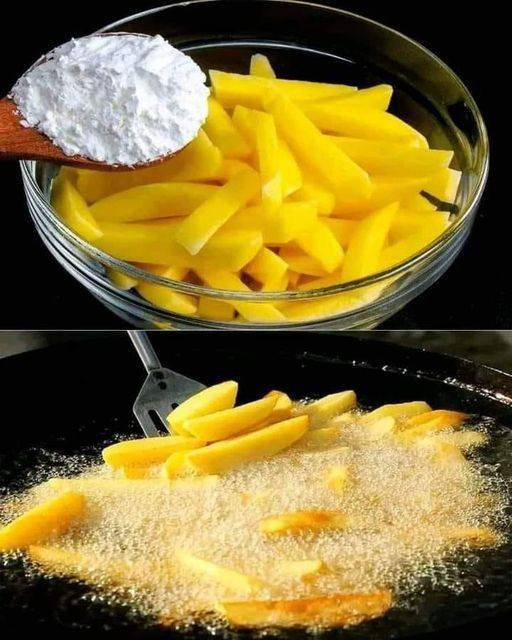ADVERTISEMENT
Crispy Fries Made Perfect: The Vinegar Trick You Need to Know
There’s nothing quite like the satisfying crunch of crispy fries, hot and golden from the fryer. Whether you’re enjoying them as a side dish, a snack, or even topped with your favorite seasonings, fries are universally loved for their crispy texture and comforting flavor. But let’s face it: making fries that are perfectly crispy on the outside while remaining soft and fluffy on the inside can be a bit tricky.
Here’s the good news—there’s a secret trick that will take your homemade fries from soggy and limp to crispy perfection. That secret is vinegar! Yes, you read that right—vinegar isn’t just for pickling! When used correctly, vinegar can be a game-changer in making fries extra crispy.
In this article, we’ll show you how the vinegar trick works and guide you through the steps to create the crispiest, most delicious fries right in your own kitchen.
Why Vinegar Helps Make Fries Extra Crispy
You might be wondering how vinegar can make a difference when it comes to fries. The key is in the way vinegar interacts with the starch in potatoes. Potatoes contain starch, and when they are fried, the starch can create a starchy layer on the surface of the fry. This layer can sometimes cause the fries to become soft and soggy rather than crispy.
When you soak your potato slices in a vinegar-water solution, the vinegar helps to break down the starches on the surface of the fries. This process leads to a crispier texture once the fries are fried because the vinegar helps the fries maintain their shape while crisping up. Additionally, vinegar helps lower the boiling point of water, which helps prevent the fries from becoming greasy when fried.
The Vinegar Trick: How to Make Crispy Fries
Ready to try the vinegar trick for crispy fries? Follow these easy steps to get perfectly crisp fries every time.
Ingredients:
- 4 medium-sized russet potatoes (or your preferred variety for fries)
- 2-3 tablespoons of white vinegar (or apple cider vinegar)
- Cold water
- Salt (for seasoning)
- Vegetable oil (for frying)
- For Complete Cooking STEPS Please Head On Over To Next Page Or Open button (>) and don’t forget to SHARE with your Facebook friends
Instructions:
- Prepare the Potatoes:
- Begin by peeling the potatoes (optional, depending on your preference). You can leave the skins on for a rustic feel or peel them for a smoother texture.
- Cut the potatoes into thin strips about 1/4 to 1/2 inch thick, depending on how crispy you want them. If you prefer thicker fries, adjust the size of the cuts accordingly.
- Soak in Vinegar Solution:
- In a large bowl, mix about 2-3 tablespoons of white vinegar with 4 cups of cold water. The vinegar helps break down excess starch, and the cold water prevents the fries from becoming mushy.
- Add the potato strips to the vinegar solution and let them soak for at least 30 minutes (but you can soak them for up to an hour). This soaking step is key to achieving the crispy texture you’re aiming for. The longer you soak them, the crispier they will be.
- Drain and Dry:
- After soaking, drain the potatoes and pat them dry with a clean kitchen towel or paper towels. This step is crucial—any excess moisture on the surface of the fries can cause them to steam rather than fry, which can lead to soggy fries.
- Heat the Oil:
- In a deep frying pan or a fryer, heat the oil to around 350°F (175°C). Make sure the oil is hot enough to cook the fries quickly, which helps them achieve that crispy texture. You can test the temperature by dropping in a small piece of potato—if it sizzles immediately, the oil is ready.
- Fry the Fries:
- Carefully add the potato strips to the hot oil in small batches. Fry for about 3-5 minutes or until the fries are golden brown and crispy on the outside. Be sure not to overcrowd the pan, as this can cause the fries to cook unevenly.
- Drain and Season:
- Once the fries are crispy and golden, use a slotted spoon to remove them from the oil and place them on a paper towel-lined p
- Once the fries are crispy and golden, use a slotted spoon to remove them from the oil and place them on a paper towel-lined p
